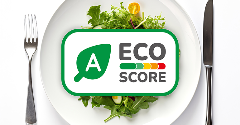News
Food industry lags on healthier product formulation, nutrition index finds
7 Mar 2025The world’s biggest food manufacturers derive just 34% of their sales from healthier products, according to the 2024 Global Access to Nutrition Index.

Despite growing consumer demand for nutritious foods, the latest index found that industry progress remains slow, with low- and middle-income countries (LMICs) disproportionately affected by the availability of unhealthy products.
The index, which evaluates the 30 largest food and beverage (F&B) manufacturers, covering 23% of the global market, highlights a gap between corporate commitments to nutrition and actual product reformulation. It also identifies rising investor pressure and upcoming regulatory changes as key drivers that could accelerate industry action, according to the Access to Nutrition initiative (ATNi), the organisation that authors it.
Industry falls short of health targets
ATNi’s findings show that just nine out of 30 companies derive at least 50% of sales from healthier products, the threshold the organisation recommends the industry reaches by 2030. The report uses the Health Star Rating (HSR) system, where products scoring 3.5 or higher are classified as “healthier”. Just 31% of the products assessed met this threshold.
Despite corporate claims of investment in healthier portfolios, low-nutrient, energy-dense foods remain dominant, particularly in LMICs. The healthiness of food portfolios in these markets scored lower (HSR 1.8) than in high-income countries (HSR 2.3), underscoring disparities in access to nutritious options.
Fortified foods, which are often marketed – and recommended – as a solution to micronutrient deficiencies, were also scrutinised: 36% of fortified products still failed to meet the HSR 3.5+ threshold.
Marketing and affordability
While some companies have introduced responsible marketing policies, no company fully restricts the marketing of unhealthy foods to children under 18, as recommended by the World Health Organization (WHO).
ATNi reports that 37% of companies have introduced partial marketing restrictions, often raising the minimum age threshold from 12 to 13 or 16 years, but gaps remain, particularly in digital and in-school advertising.
Efforts to increase affordability of healthier foods are also limited. Just 30% of companies have a documented strategy to price some of their healthier products competitively, primarily in LMICs.
However, despite an earlier ATNi initiative to get food manufacturers on board with greater use of nutrient profiling models (NPMs), only two companies use internationally recognised NPMs to define which products qualify as healthier for affordability schemes. ATNi highlights the lack of standardised metrics in this area as a barrier to progress.
Regulatory pressure and investor scrutiny increase
Governments are pushing for stricter regulation of the food industry, including mandatory front-of-pack labelling, higher taxes on unhealthy foods, and restrictions on marketing to children. ATNi notes that voluntary corporate actions have been insufficient, making regulatory intervention increasingly likely.
Investor expectations are also shifting. Thirty percent of companies now use an internationally recognised NPM to assess and classify their products, reflecting growing demand for transparency.
Some institutional investors are already integrating portfolio health metrics into environmental, social, and governance (ESG) assessments, linking investment decisions to company performance on nutrition.
Companies that fail to adapt face risk
ATNi’s findings suggest that companies that fail to improve their product portfolios could face regulatory and commercial risks.
Several major manufacturers are already adjusting their strategies – with positive financial effects. Companies with stronger performance on product health metrics, such as the Yili group, Danone, and Mengniu, have higher average pre-interest and pre-tax earning margins (15.2%) than portfolios dominated by high-sugar, high-fat products (13.4%).
The rise of weight-loss medications in high-income countries is also disrupting the packaged food sector, with some manufacturers exploring reformulation and new product lines to align with changing consumer behaviour.
At the same time, LMICs remain a growth market for processed foods, where multinational brands are expanding distribution despite concerns over product healthiness.
Related news

UK Government overhauls childhood obesity strategy
21 Nov 2025
The UK Government has announced a new package of measures designed to reverse the nation’s childhood obesity epidemic following the release of statistics revealing the scale of the crisis.
Read more
How younger consumers are redefining ingredient choices and rejecting brand loyalty
18 Nov 2025
Gen Z and millennial consumers’ preferences for transparency, functionality, and purpose are “redefining the very nature of consumption itself”, says SPINS.
Read more
New UPF standard hoped to offer consumers ‘coherence and clarity’
10 Nov 2025
Ingredients companies are being urged to enter “a new era of partnership and innovation” following the launch of the industry’s first non-UPF verification scheme.
Read more
Ingredient quantities mislabelled on popular protein bars, independent tests show
5 Nov 2025
Some popular protein bars contain more fat, carbs, and/or sugars than claimed on their labels, independent nutrition testing reveals.
Read more
Does promoting protein content push up plant-based sales?
27 Oct 2025
Promoting the protein content of meat-free products is a more effective sales strategy than adding carbon labels, a study of UK bakery chain Greggs suggests.
Read more
Supplement shoppers seek storytelling and science-backed suppliers
17 Oct 2025
Supplement consumers want specific health benefits that focus on prevention and personalisation, according to data from HealthFocus International.
Read more
Food fraud risks rise as brands fight economic and environmental headwinds
10 Oct 2025
Climate change, geopolitics, regulations, and demand for sustainable products are pushing up food fraud and adulteration risks, warns a world-leading food fraud expert.
Read more
The growing appeal of nutrient-dense food claims
2 Oct 2025
Nutrient-dense claims are rising as consumers reject the “empty calories” of UPFs in favour of products that provide meaningful nutrition with every calorie, Mintel data shows.
Read more
What does MAHA mean for the US nutraceutical industry?
30 Sep 2025
Industry associations have expressed mixed reactions to new policy directions on health and nutrition under the Make America Health Again (MAHA) banner.
Read more
Eco-Score labels improve consumer identification of sustainable foods
22 Sep 2025
The presence of a front-of-pack Eco-Score label improves consumers' accuracy in identifying sustainable food products from 52% to 72%, a study suggests.
Read more